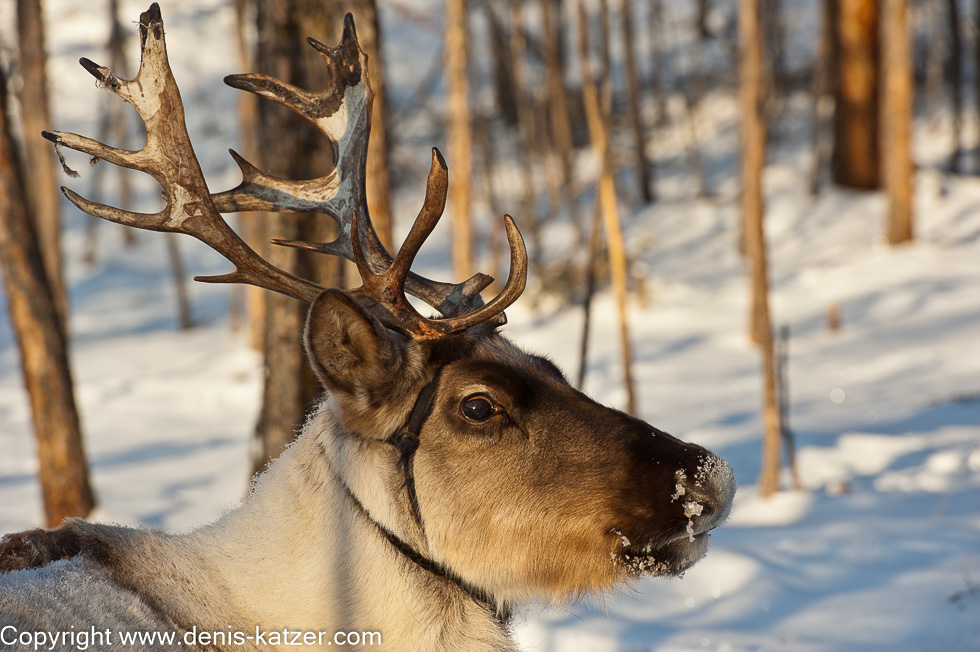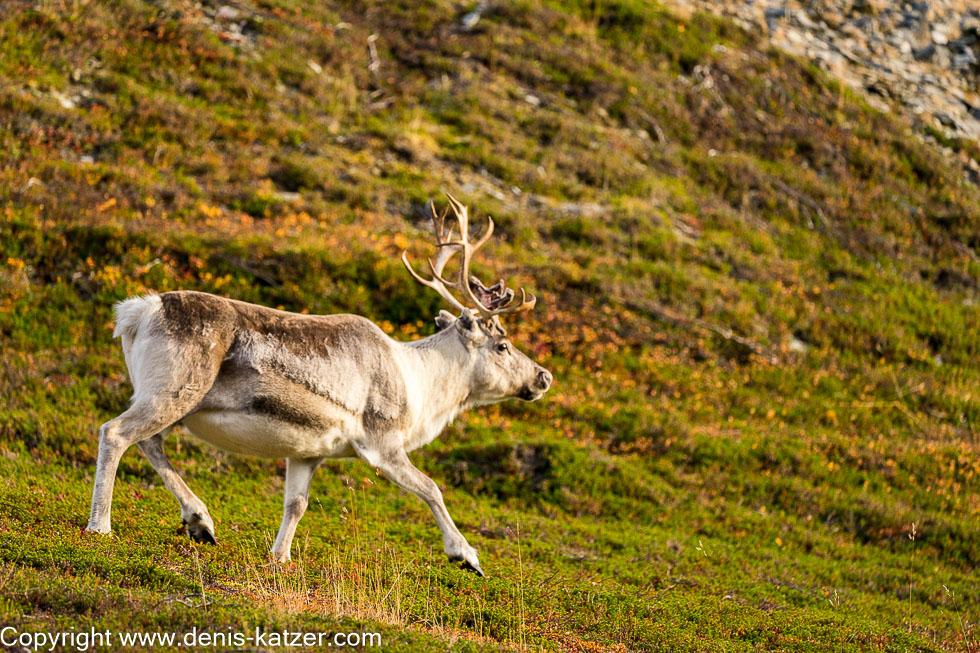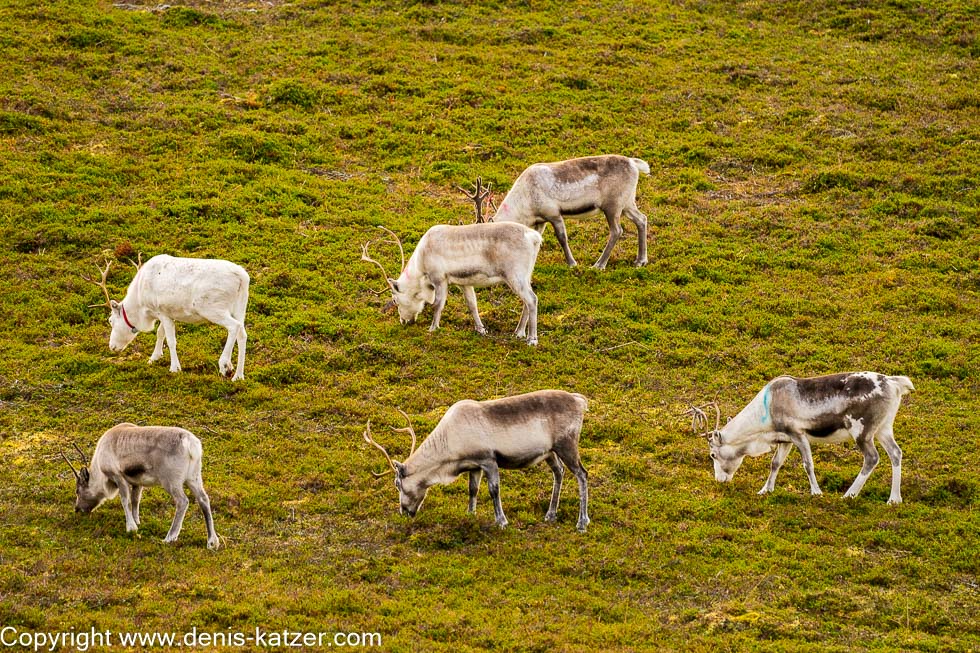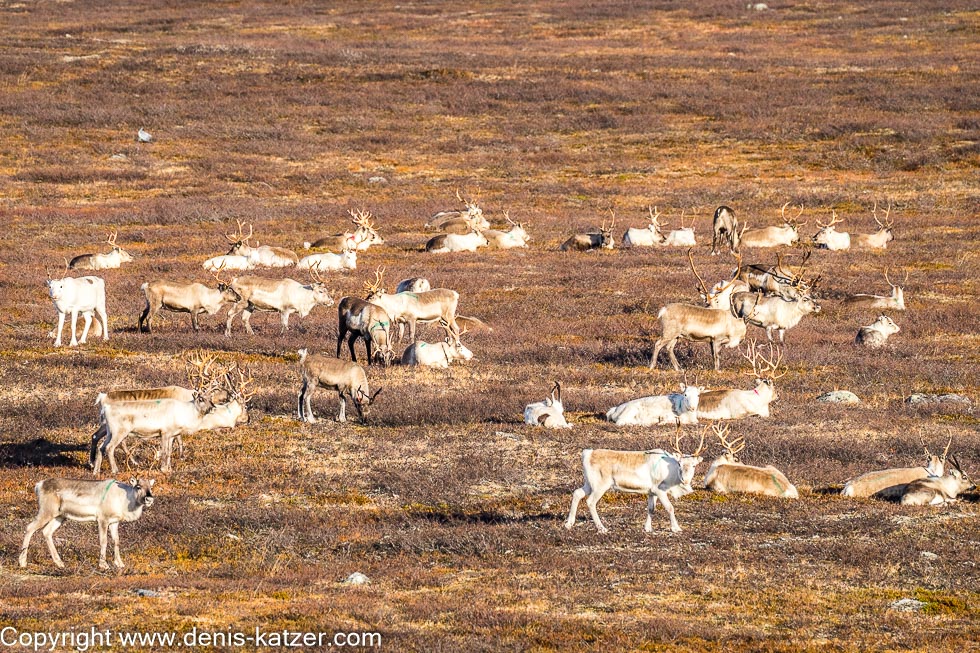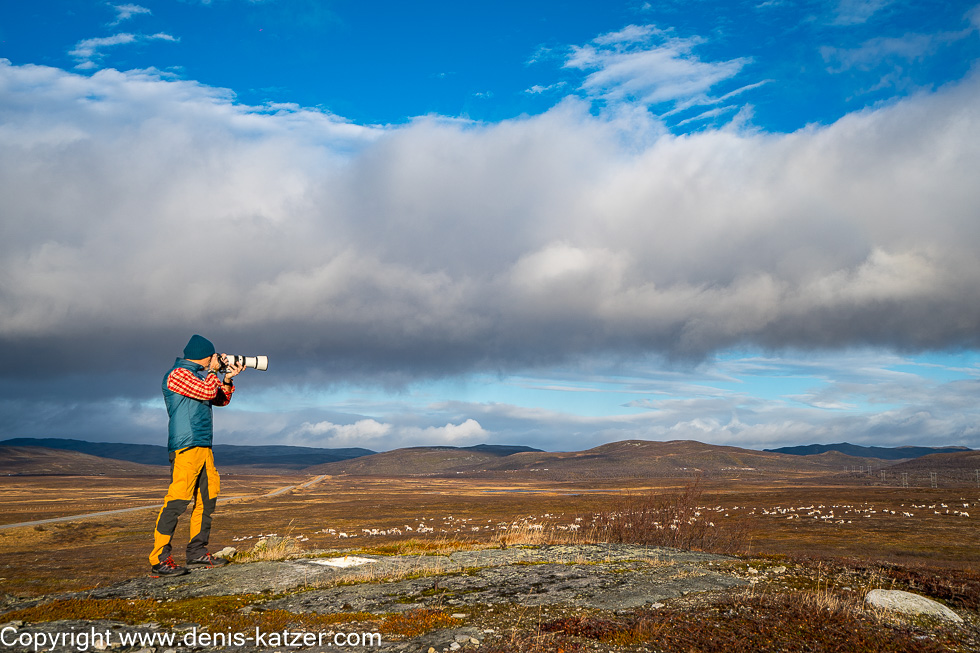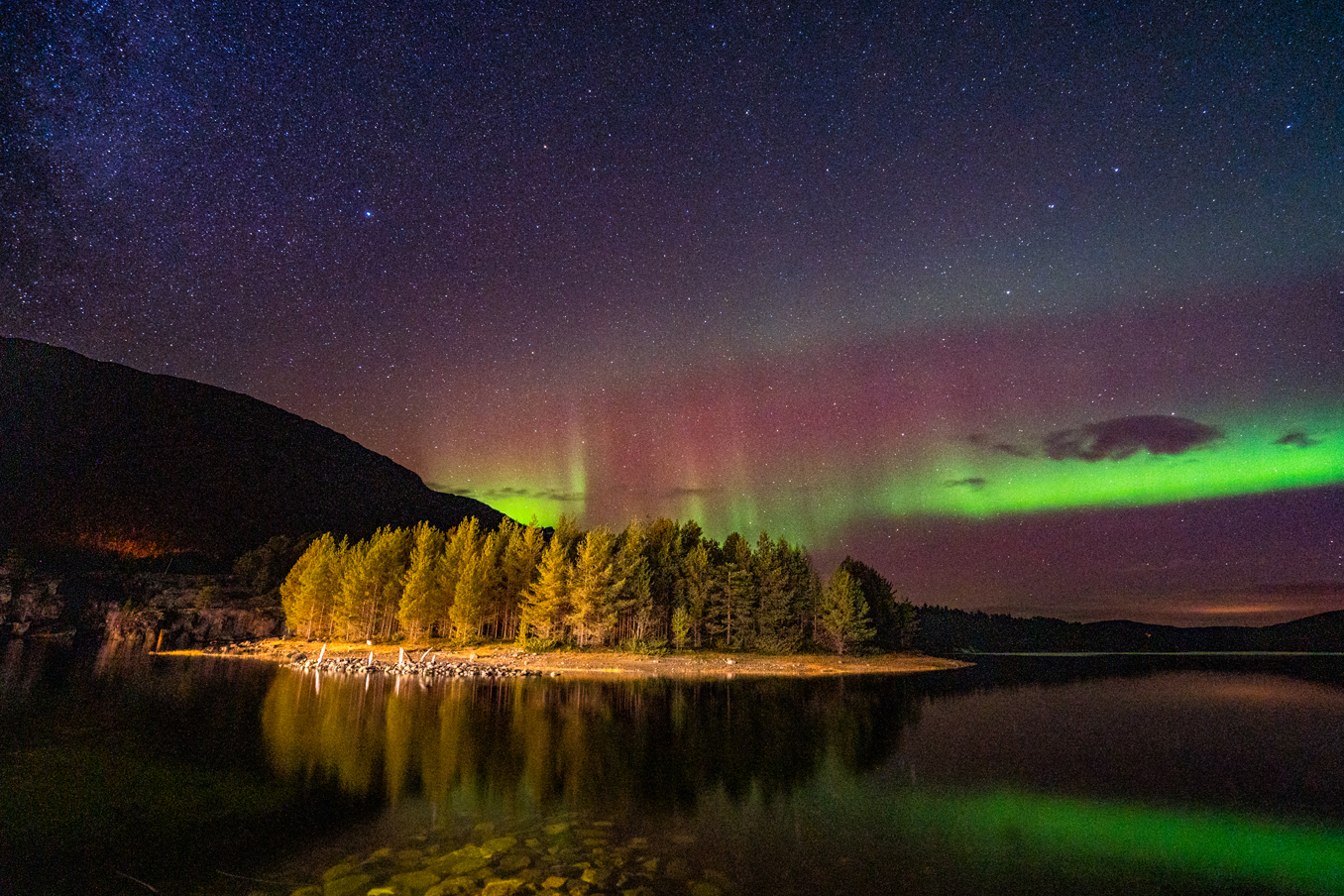
As if severed by the stroke of a sword and large herds of reindeer
N 70°03'09.9'' E 022°27'06.0''
Date:
11.10.2020 until 15.10.2020
Day: 070 – 074
Country:
Norway
Location:
At the Langfjord
Daily kilometers:
319 km
Total kilometers:
6878 km
Soil condition:
Asphalt
Bridge crossings:
21
Tunnel passages:
11
Sunrise:
07:18 – 07:31
Sunset:
17:16 – 17:02
Temperature day max:
8° – 3°
Night temperature min:
7° – 1
(Photos of the diary entry can be found at the end of the text).
Click here for the podcasts!
Link to the current itinerary
(For more posts click on one of the flags in the map
We leave the campsite, which is still covered in fog, without having breakfast. We feel our way across the high plateau at walking pace. When the gloomy soup of clouds spits out a car in front of us, we get a real fright. As we drive past, we see the driver raise his hand. “Wasn’t that Peter?” I ask. “That was him. He even laughed and said hello,” Tanja marvels. “He’s probably glad that we followed his request to stay just one night,” I think. “Who knows what’s going on in his head. Looking at the bad weather, it was the only right decision. We wouldn’t have seen anything up there and it could start snowing at any moment. The weather is bound to get better a little further south,” says Tanja. “In that sense, he did us a favor with his expulsion campaign,” I reply with a laugh. In fact, just 20 kilometers further on, you could be forgiven for thinking that an imaginary sword blow had split the wall of clouds. Suddenly it is as bright as day, clouds are back where they belong and a few rays of sunlight bathe the treeless landscape in a warm light. The tube that takes us from the island of Magerøya to the mainland at a depth of 212 meters appears in front of us again. “Look at that! There’s a huge herd of reindeer!” Tanja cheers. “Fantastic! To see them, we just have to find a way to stop somewhere,” I say, as there is a ditch to the left and right of the narrow strip of asphalt that is impossible even for our Terra to cross. “There! There’s a possibility!” says Tanja, pointing to a dirt track that leads from the wilderness directly to the road. Three kilometers further on, I put the pedal to the metal, turn around on a widened shoulder and drive back to the dirt road. With the gear reductions engaged, we roll through a deep ditch onto the track. We follow the bumpy path for a few kilometers. “They’re over there!” shouts Tanja. We shoulder our cameras, walk up a gentle hill and look down into a valley overgrown with lichen, shrubs and mosses, where hundreds of reindeer graze peacefully. “Wow, how beautiful,” I murmur. As the wind is favorable, the shy animals don’t smell us, which is why we get relatively close to them to take a few photos. Then we sit down on a few grass lichens and enjoy the extraordinary moment. As far as we know, Stone Age hunters such as the Neanderthals immortalized reindeer in their cave drawings and over 5,000 years ago, humans began to harness the animals for their own use. “For us, the reindeer means food, warmth and is our means of transportation,” the Tuvan nomads in northern Mongolia, where we were guests from 2011 to 2012, told us. Because we shared the simple life with the nomads, we were gifted with deep, unforgettable insights into their way of life, which we recorded in two books.
Reindeer were of fundamental importance to the indigenous peoples. Especially in regions where there was little game and where building materials such as wood were rare, they used the skin for furs and leather. They also used the blood as a remedy and the 22 percent fat milk (six times as fat as cow’s milk) and the tender meat as food. They used the antlers and bones to make tools. Some of them, such as the Evens, Lamuts or Tunguses, the indigenous people of north-east Asia, or the Tuvan nomads in northern Mongolia, the Nenets of the Yamal Peninsula in Siberia and parts of the Sami in Norway, Finland and Sweden still live with and from their free-roaming herds, which they round up at set times to mark the calves or slaughter selected animals.
Suddenly, a modern reindeer herder on his quad bike (small off-road vehicle on four wheels) thunders towards his herd. “What’s he doing there?” wonders Tanja. “I have no idea. Maybe he’s just checking that his animals are doing well,” I suspect. “The Tuwa did it on foot or on horseback.” “True, but the Sami are not the Tuwa. Norway is a rich country. They obviously have the money here to drive their animals in with technical aids or to quickly check on things,” I reply. “Shouldn’t we believe that reindeer are now threatened by climate change?” Tanja breaks our silence a little later. “Yes,” I reply, remembering that these animals cannot tolerate higher temperatures. The Tuvan nomads told us that in 2010 the ice fields on the summer pastures had decreased more than before. “They lacked the opportunity to cool down and were stressed by the blood-sucking insects, so many of them died. We are afraid for our future and are now barely able to survive on our reindeer. I think climate change is responsible for this. Sometimes it even rains in winter, and when the water freezes again, the ground is so hard that our animals can no longer dig up lichen with their hooves, and some of them starve to death,” Ultsan, one of the young hunters we befriended, told us…
